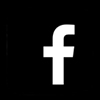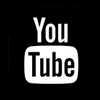Coursing

Coursing, or big game hunting, has been practised for two thousand years on our land; animals coursed include red deer, fallow deer, roe deer, wild boar, bear and so on. However, hunting in the beginning was a lot different from its modern day practice. Ancient forests were not well laid out; thus they were very hard to access, if not impossible to penetrate. Hunters would cordon off a sector with nets, or by placing guards in key exit points; then they would unleash the hounds to drive prey towards the spots where the hunters were awaiting them. There was almost no limits to the pursuit, and the catch was more often than not abundant.
Whistles and calling horns
 In this type of hunting, it was necessary to be able to exchange signals at a distance in order to coordinate the many participants. Up close we were content to shout; at longer ranges, whistles or call horns were used. These rudimentary instruments consisted of a flared, slightly curved tube, about twenty to forty centimeters in length on average. They were made of all kinds of materials: metal, horn, wood, boiled leather, etc. Some were very simple, others richly decorated according to the fortune of their owner. Roland’s mythical olifant, in Charlemagne’s time, was a military parade version, carved from ivory.
In this type of hunting, it was necessary to be able to exchange signals at a distance in order to coordinate the many participants. Up close we were content to shout; at longer ranges, whistles or call horns were used. These rudimentary instruments consisted of a flared, slightly curved tube, about twenty to forty centimeters in length on average. They were made of all kinds of materials: metal, horn, wood, boiled leather, etc. Some were very simple, others richly decorated according to the fortune of their owner. Roland’s mythical olifant, in Charlemagne’s time, was a military parade version, carved from ivory.
Throughout the Middle Ages, we find these instruments under various names: horn, horn, huchet, graile, araine, trunk… But whatever they were, they could only produce one or two sounds. To differentiate the signals, we made short or long series of notes (as with the Morse alphabet used in the past in telegraphy).
For example the “Cornure de Requeste” (requêté) appearing in the Book of the Hunt by Gaston Phoebus, in the 14th century, is described as follows (word = note): “Corner a long word, then four short words followed by another long word, followed by four short words “. Another author of the same period, Henri de Ferrière, writes about the hallali: “All those who have horns must corner together, and it is beautiful melody”. No doubt our ears would not hear it that way today, but we see that the huntsmen were not insensitive to the musical aspect of these primitive “horns” which foreshadow the trumpet fanfares.
History of Maison Périnet
For the amateur of old horns, the table below retraces the successive stages of the mark and makes it possible to date a period instrument according to the address which it carries.
Paris
François Périnet – 1829-1838
42, rue Bourbon Villeneuve - Paris
François Périnet – 1838-1849
23, rue des Bassins - Passy
François Périnet – 1849-1858
23, rue des Bassins - Passy
François Périnet, Pettex-Muffat & Cie – 1859-1862
rue des Bassins, 23 - Passy
François Périnet, Pettex-Muffat & Jolly Pottuz succr. – 1863-1864
23, rue Copernic - Paris
François Périnet, Pettex-Muffat & Jolly Pottuz succr. – 1865-1869
37, rue Copernic - Paris
François Périnet, Pettex-Muffat & Jolly Pottuz succr. – 1870-1871
37, rue Copernic, près de l‘arc de l’étoile - Paris
François Périnet, Pettex-Muffat & Jolly Pottuz succr. – 1871-1874
27, rue Copernic, près de l‘arc de l’étoile - Paris
François Périnet, Pettex-Muffat & Jolly Pottuz succr. – 1874-1882
31, rue Copernic, près de l‘arc de l’étoile - Paris
François Périnet, Pettex-Muffat & Jolly Pottuz succr. – 1883-1895
31 rue Copernic, près l‘arc de l’étoile - Paris
François Périnet, Henri Pettex-Muffat succr. – 1900-1904
40 bis, rue Fabert - Paris
François Périnet, Emile Dhabit succr. – 1905-1923
40 bis, rue Fabert - Paris
François Périnet, Maurice Valéry succr. – 1921-1939
40 bis, rue Fabert - Paris
François Périnet, Tutin & Cheval succr. – 1940-1944
40 ter, rue Fabert - Paris
François Périnet, Cheval succr. – 1945-1967
Périnet - Paris
François Périnet, Michel Bureau succr. – 1967-1994
Viaduc des Arts - Paris
François Périnet, Bureau succr. – 1994-1999
Paris
Périnet, Bureau succr. – 2000


